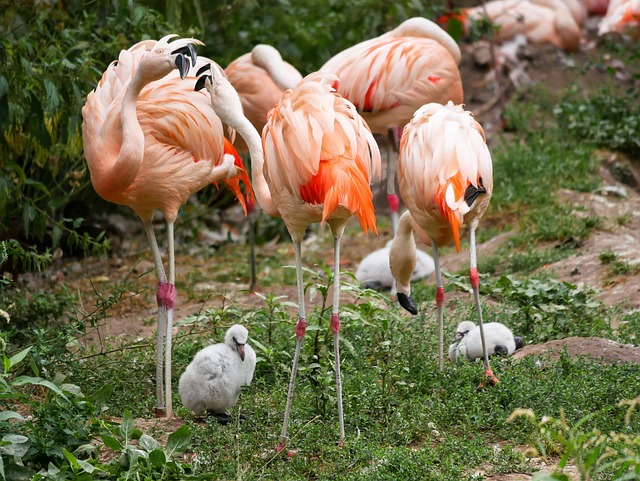Pink flamingos are a colorful and popular decoration that has been a fixture in American culture for decades. Originally created as a lawn ornament, pink flamingos have now found their way into campgrounds across the country, where they serve a variety of purposes. In this article, I will explore what do pink flamingos mean at a campground, the history of pink flamingos, and what they symbolize. I will also touch on some of the controversies surrounding pink flamingos and their impact on the environment. Whether you’re a fan of these kitschy decorations or not, you’re sure to learn something new about pink flamingos at campgrounds.
The History of Pink Flamingos
The history of pink flamingos dates back to the 1950s when the first plastic pink flamingos were created by a man named Don Featherstone. Featherstone was a sculptor and artist who worked for Union Products, a Massachusetts-based plastics company that produced lawn ornaments. He created the iconic design that we know today, with its distinctive curved neck, bright pink color, and long legs.
The pink flamingo quickly became a popular lawn ornament, and by the 1960s, it was a ubiquitous feature of American front yards. The trend was further popularized by movies, TV shows, and pop culture references. For example, in the 1972 film “Pink Flamingos” by John Waters, the pink flamingo became a symbol of kitsch and bad taste.
Despite a decline in popularity in the 1980s and 90s, the pink flamingo experienced a resurgence in the 2000s, becoming a hip and ironic decoration for a new generation. Today, pink flamingos can be found not just in front yards, but also in a variety of other settings, including campgrounds.
In 1996, Union Products went bankrupt, but the molds for the original pink flamingo were purchased by Cado Products, which continues to produce the classic design to this day. In recent years, some companies have started producing eco-friendly versions of the pink flamingo, made from recycled materials, to address concerns about the environmental impact of plastic lawn ornaments.
Pink Flamingos at Campgrounds
Pink flamingos have become a common sight at campgrounds, where they serve a variety of purposes. One of the main reasons why pink flamingos are used at campgrounds is as a way to mark campsites. With their bright color and distinctive design, they make it easy for campers to find their way back to their site after a day of exploring or hiking. Additionally, they can help campers identify their site from a distance, which can be especially helpful at larger campgrounds.
Beyond their practical use as markers, pink flamingos have also become a popular decoration at campgrounds. Many campers enjoy the kitschy, retro vibe of the pink flamingo and choose to incorporate them into their campsite decor. From lining the perimeter of their site to being featured prominently in the center, pink flamingos can add a fun and playful touch to any campsite.
Some campgrounds have even embraced the trend and incorporated pink flamingos into their own decor. For example, some campgrounds have pink flamingo-themed events, where campers can participate in activities and games centered around the iconic bird. Others have embraced the kitschy, retro aesthetic of the pink flamingo and incorporated it into their overall design.
Overall, pink flamingos have become a beloved and iconic feature of many campgrounds, adding a touch of whimsy and nostalgia to the camping experience.
What Pink Flamingos Symbolize
The pink flamingo can symbolize a variety of things, depending on the context and interpretation. Here are some common interpretations of what pink flamingos symbolize:
- Relaxation and leisure: The bright pink color and playful design of the pink flamingo can evoke feelings of relaxation, fun, and leisure. This is why they are often associated with vacation spots and resorts, and why they have become a popular decoration at campgrounds.
- Kitsch and nostalgia: Pink flamingos have a long history in American culture, and have become associated with a kitschy, retro aesthetic. They can evoke feelings of nostalgia for a simpler time, and are often used in a tongue-in-cheek way to embrace the “so bad it’s good” aspect of kitsch.
- Individuality and quirkiness: Pink flamingos are not a common lawn ornament or decoration, and their use can signal an embrace of individuality and quirkiness. Using pink flamingos at a campsite or as a decoration can communicate a sense of playfulness and personality.
- Creativity and artistry: Some people view pink flamingos as a form of artistic expression, and use them as a canvas to showcase their creativity. This can include painting them in unique designs or patterns or using them in unexpected ways.
Overall, the meaning of the pink flamingo is largely subjective and can vary widely depending on the interpretation. However, they are generally seen as playful and lighthearted decorations that can add a touch of whimsy to any setting.
Controversies Surrounding Pink Flamingos
While pink flamingos are generally seen as a harmless and fun decoration, there are some controversies surrounding their use. Here are a few of the main issues:
- Cultural appropriation: Some people argue that the use of pink flamingos as decoration is a form of cultural appropriation. The pink flamingo is native to the Caribbean and South America, and some people believe that the use of the bird as a decoration by Americans is disrespectful and appropriative.
- Environmental impact: Like all plastic products, pink flamingos have an environmental impact. When they are discarded or damaged, they can end up in landfills or in the natural environment, where they can harm wildlife. Some campgrounds have started to address this issue by offering eco-friendly alternatives, such as biodegradable or recyclable markers.
- Reaction of campground owners: While many campgrounds embrace the use of pink flamingos, others have taken a different approach. Some campground owners view them as a tacky or inappropriate decorations and have banned their use on their property.
Despite these controversies, pink flamingos remain a popular decoration at many campgrounds, and their use shows no signs of slowing down. As with any trend or decoration, it’s important to be mindful of the potential impact and to use them in a responsible and respectful way.
Conclusion
In conclusion, pink flamingos have a long and fascinating history in American culture and have become a popular decoration at campgrounds across the country. They serve a variety of purposes, from marking campsites to adding a playful touch to campsite decor. While they are generally seen as a fun and harmless decoration, there are some controversies surrounding their use, including concerns about cultural appropriation and environmental impact.
Despite these controversies, pink flamingos continue to be a beloved and iconic feature of many campgrounds, adding a touch of whimsy and nostalgia to the camping experience. Whether you’re a fan of the pink flamingo or not, it’s clear that they have become an important part of American culture and will continue to be a fixture at campgrounds for years to come. As with any decoration or trend, it’s important to use them in a responsible and respectful way, taking into account any potential impact on the environment or cultural sensitivities.




